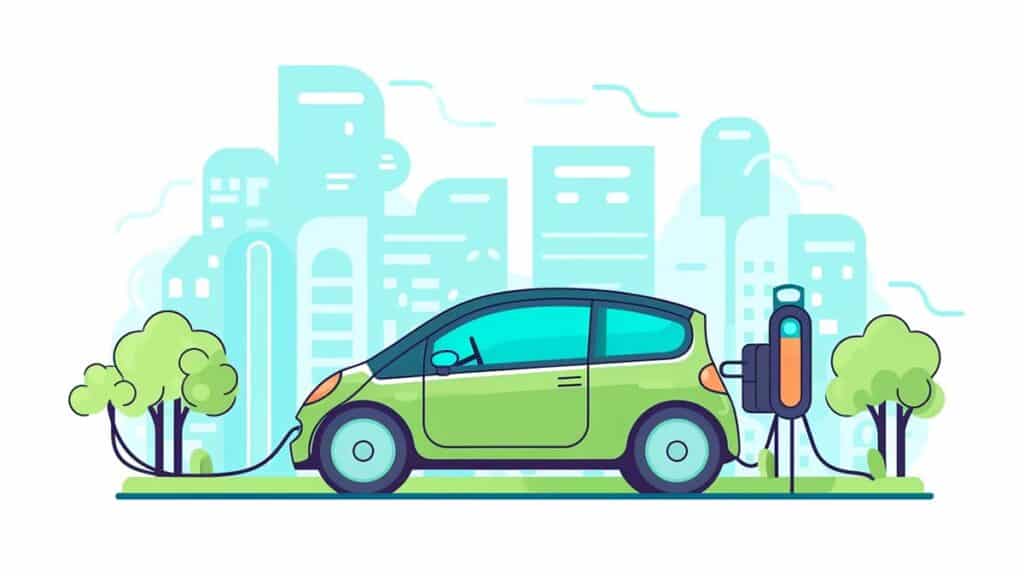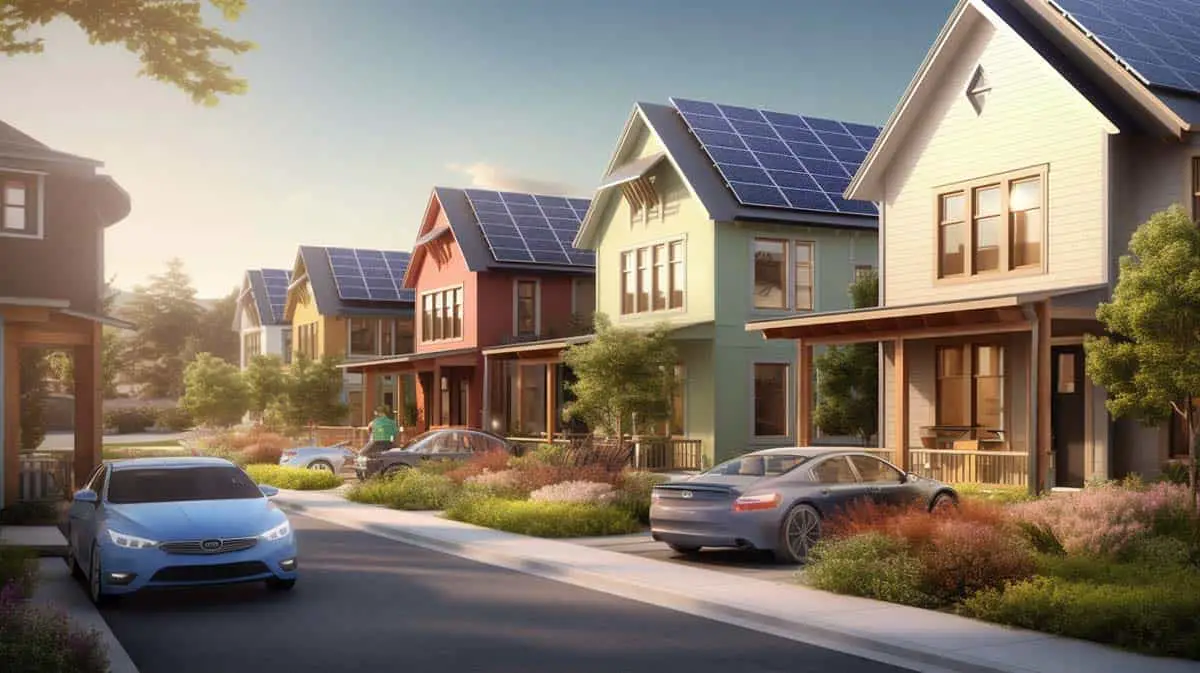The global push towards a sustainable future has brought Zero-Emission Vehicles (ZEVs) to the forefront of transportation innovation.
As we strive for better ways to preserve our natural resources, ZEV adoption offers significant advantages in reducing greenhouse gas emissions and conserving non-renewable fuels.
In this blog post, we will delve into the impact of ZEVs on natural resource preservation and discuss how local governments are adapting their planning implementations to create an equitable multi-modal ecosystem that benefits everyday life while safeguarding our planet.

Key Takeaways
- Zero-Emission Vehicles (ZEVs) play a significant role in natural resource preservation by reducing greenhouse gas emissions and preserving non-renewable resources.
- ZEV adoption offers numerous benefits, including reduced dependence on fossil fuels, increased energy efficiency, and spurring advancements in renewable energy and battery technology.
- Local governments can create a more equitable multi-modal ecosystem that benefits everyday life while safeguarding our planet through implementing readiness plans promoting ZEV ecosystems under California’s executive orders like N-79-20 and B-48-18.
- By prioritizing ZEV adoption, we promote the preservation of the natural environment.
Impact Of ZEVs On Natural Resource Preservation
ZEVs have a significant impact on natural resource preservation by reducing greenhouse gas emissions and preserving non-renewable resources.
Reduced Greenhouse Gas Emissions
One significant advantage of ZEVs in the fight against climate change is their potential to reduce greenhouse gas emissions dramatically. Unlike conventional vehicles that rely on fossil fuels, ZEVs like electric and hydrogen fuel cell vehicles produce zero tailpipe emissions.
A prime example of the positive impact of ZEVs can be found in California’s Zero Emission Vehicle program, which has been instrumental in reducing carbon emissions within the state.
In fact, studies have shown that electrifying vehicles consistently reduces CO2 emissions while also providing substantial air quality benefits – an especially important factor for regions with high levels of pollution.
Preservation Of Non-renewable Resources
The switch to ZEVs (zero-emission vehicles) plays a significant role in preserving non-renewable resources, such as fossil fuels. By reducing our reliance on these finite and environmentally damaging energy sources, we contribute to a more sustainable future.
For instance, traditional gasoline-powered cars consume vast amounts of oil while creating substantial greenhouse gas emissions.
Not only would this switch help mitigate the negative environmental impacts associated with extracting and burning fossil fuels, but it also leads to positive economic ramifications.
Reduced dependence on non-renewable resources fosters innovation in clean transportation technology and can decrease our susceptibility to volatile oil prices.

Benefits Of Adopting ZEVs For Natural Resource Preservation
Adopting ZEVs for natural resource preservation has numerous benefits, including reduced dependence on fossil fuels and increased energy efficiency.
Reduced Dependence On Fossil Fuels
One of the most significant advantages of adopting zero-emission vehicles (ZEVs) is the reduced dependence on fossil fuels, which play a central role in both our global economy and environmental challenges.
Transitioning to ZEVs can have far-reaching benefits for natural resource preservation as they are primarily powered by electricity or hydrogen fuel cells.
For example, solar or wind power used to generate electricity for electric vehicles ensures a cleaner energy source than burning oil.
Moreover, the rise of ZEVs has spurred advancements in renewable energy and battery technology that can be applied elsewhere beyond transport – such as residential solar installations – contributing to overall more efficient clean energy solutions.
Increased Energy Efficiency
As we strive towards natural resource preservation, adopting Zero Emission Vehicles (ZEVs) is paramount as it increases energy efficiency.
ZEVs have electric motors that convert up to 90% of the chemical energy stored in their batteries to power the wheels (including the energy that is re-captured by regenerative braking).
On the other hand, traditional cars only convert about 20% of the fuel they burn into useful energy for movement. This significant difference results in less wasted energy and greater efficiency with ZEVs.
Conclusion
ZEVs help reduce greenhouse gas emissions, preserve non-renewable resources, and decrease our dependence on fossil fuels.
By prioritizing multi-modal ZEV ecosystems and equitable transportation assessments for underserved communities, local governments can play a vital role in implementing ZEV readiness plans.
As individuals, we can also support this cause by choosing to use ZEVs whenever possible and advocating for their adoption within our communities.
FAQs:
What are ZEVs and how do they contribute to natural resource preservation?
ZEVs, or zero-emission vehicles, are electric vehicles that do not produce harmful emissions like traditional gasoline-powered cars. By driving ZEVs, individuals can help reduce carbon emissions and preserve natural resources such as clean air and water.
How do ZEVs compare with traditional gas-powered vehicles in terms of environmental impact?
ZEVs have a much lower environmental impact compared to gas-powered cars as they emit no pollutants from their tailpipes. This makes them a more sustainable option for transportation and helps preserve natural resources by reducing pollution levels.
Can using ZEVs really make a difference in preserving the environment?
Yes, even small changes in our everyday habits can make a significant positive impact on the environment over time. By switching to zero-emission vehicles, we can help reduce greenhouse gases and improve air quality while protecting natural resources for future generations.
Are there any incentives or benefits for drivers who switch to ZEVs?
Many governments offer incentives such as tax credits or rebates for purchasing or leasing electric vehicles like ZEVs due to their positive impact on the environment.
Additionally, owning an electric vehicle often results in lower long-term maintenance costs since they require fewer repairs than gasoline-fueled cars over time due to having less mechanical components overall making it cost-effective too besides being eco-friendly!
Catchy Title:
1. “The Future of Sustainable Mobility: ZEVs and the Preservation of Our Natural Resources”
2. “How Going Green with ZEVs Can Save Our Planet’s Precious Resources”
3. “ZEVs vs Gas Cars: The Battle for a Greener, Resource-Conserving Tomorrow”
4. “Why Switching to ZEVs is Key to Protecting Our Natural World and its Resources”
5. “Revolutionizing Transportation: How ZEV Technology is Preserving our Most Valuable Resources”
Meta Description:
1. Discover how Zero-Emission Vehicles (ZEVs) are paving the way towards a sustainable future and preserving our natural resources. Read on to learn more!
2. Looking for ways to reduce greenhouse gas emissions and conserve non-renewable fuels? Find out how ZEV adoption can make a tangible difference in natural resource preservation.
3. How are local governments adapting their planning implementations to create an equitable multi-modal ecosystem that benefits everyday life while safeguarding our planet? Dive into this blog post on ZEVs and find out!
- Tesla Charger Installation Cost (Home Setups) - March 1, 2024
- Tesla Phone Key Disconnected (Troubleshooting Guide and Quick Fixes) - March 1, 2024
- Tesla FSD 12 (Explained) - March 1, 2024